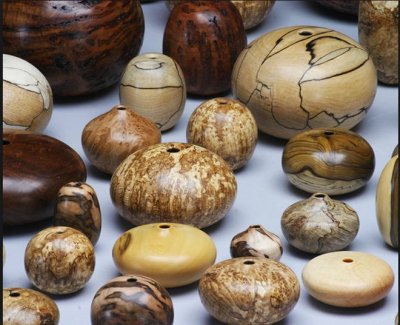Ellsworth at that time was just new and trying to stand out of the crowd, as he was turning small hollow forms by the dozen while sitting on his lathe.
He went to a symposium in Ireland to show off his making of his hollow forms and to show/sell the hollowing tools he had made to do this.
In the picture he is using a lathe from the Irish turners, not his own lathe.
As was said, in turning a hollow form and standing alongside his lathe, he certainly could not hold the tool under his arm, he was not turning an open bowl, but small Hollow forms with a small opening as shown here, and he would have to lean over the lathe and extend his arm, loosing the precise control he needs to do that kind of turning.

It was at this symposium that he discovered the new turning tool shape the Irish turners had come up with, as we call it “The Irish grind” he than ran home very quickly to start selling the is new gouge in the US, as some then call it the Ellsworth grind, typical the American way

As for the question of the Morse Taper, I would go for a larger threaded end and the MT3 in both the head and tailstock, the handwheel will come off if you use it to slow down the lathe, unless you fasten it with set crews or other.
For blocking the lathe to loosen the chuck or faceplate, you better make it substantial, a large and heavy piece of wood can get these very tight on your shaft.
An indexing setup, I would want right up front where you van get at it easily while adjusting the workpiece to the next position.
Sanding or grinding on the lathe I do frown upon, I never like to introduce sanding/grinding dust or particles on/in my lathe, a separate sander with belt and disk would be my choice.



